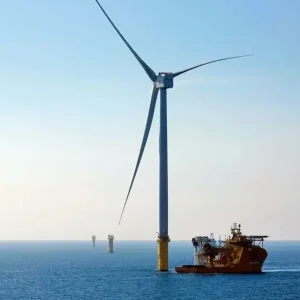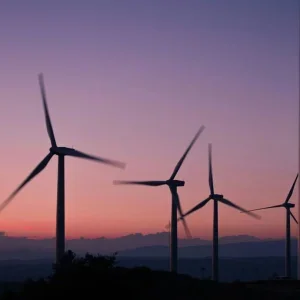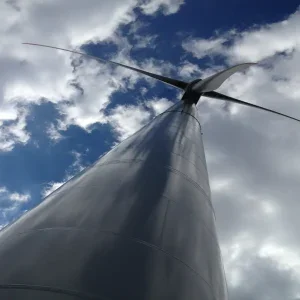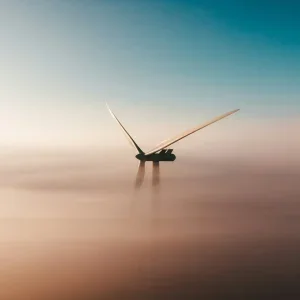“The environment where offshore work is carried out is, by its very nature, dangerous. The oceans have claimed lives for thousands of years, and they still do. But the overall objective is to bring everyone back safely from the excursion to the offshore site, and if a wind farm can be built during this excursion, it’s an added benefit,” said Kurt E Thomsen in Offshore Wind: A Comprehensive Guide to Offshore Wind Farm Installation. Thomsen is an offshore wind architect, developer of the first ‘crane ship’ and founder of four manufacturing companies that together have installed more than 800 wind farms in Europe.
There were 737 reported incidents on UK offshore wind farms in 2016; blades falling off, turbines tipping over, falls from height, vessels sinking in icecold water, groundings, on-board fires and helicopter crashes make up just some of the reports.
The most common accounts were of hand injuries, while lost fingers, crushed arms, broken bones, fractures, lifting injuries and knockedout teeth also occur. Non-accidental medical emergencies include strokes, heart and asthma attacks, and anaphylactic shock.
Of all the incidents at UK offshore wind farms, the majority happened on operational sites: only two were recorded during wind farm development in 2016. Around 44% of offshore medical emergencies occurred in the turbine region, while just over one quarter were on vessels. The number of fall-related injuries was 110 (15%), of which 95 (13%) were during heavy-lifting operations.
All of these accidents and yet there have been zero recorded fatalities on UK offshore wind farms in the past five years, according to annual G9 UK offshore wind health and safety statistics reports. This is, in part, due to the extraordinary efforts of offshore paramedics, who set off to attend medical emergencies at a moment’s notice, making sure an accident doesn’t become something more serious. But with teams often based on land, how do paramedics handle the critical time pressures when responding to offshore accidents?
The dual role
Paramedics undergo technician training so that lives can be saved offshore within the ‘golden hour’, the brief window when aid is critical. SSI Energy says having fully trained paramedics on standby provides a much higher level of service than that offered by technicians with firstaid training.
“This can provide a significant saving to operators as paramedics are far more capable of diagnosing correctly and have a significant protocol of drugs at their disposal, as well as SSI doctor support, to enable them to carry out treatment offshore, without having to unnecessarily return a patient to the base,” said SSI Energy’s managing director, Duncan Higham, in a company press release.
“That said, when something serious does happen, they are much more likely to recognise the signs and symptoms early, ensuring the ERP is swiftly enacted,” he added.
The company has deployed two paramedic-technicians working on shifts at Greater Gabbard offshore wind farm (GGOWF). Meanwhile, one medic has started on East Anglia ONE, located 30 miles off the Suffolk coast, and another will join them this summer.
Under existing practices, the only medical cover is provided by firstaiders, who are required to undergo a two-day Global Wind Organisation (GWO) first-aid course, compared with the four years of training that paramedics receive.
“Even though the advanced GWO first-aid course has put on an extra day, it cannot solve the issue of the complexity of providing lifesaving care in one day,” Higham said. “Most of our medics have more than 15 years’ experience.
“You can have ten first-aiders but it isn’t as effective as having one paramedic. Our medics have dealt with a stroke, a cardiac arrest and other medical emergencies on onshore wind farms.”
Safety further afield
Paramedics will work with renewable energy solution provider Turner Iceni, which recently won a contract to provide construction services for East Anglia ONE worth £4 million.
“As wind farms are being built further offshore it is increasingly important to have qualified medics during the installation and construction period,” said Turner Iceni director Richard Thurlow in the press release. “Having the capabilities and experience of the SSI team on board the Turner Iceni vessels will not only bring a level of comfort to technicians but to our vessel crews as well.”
“The health and safety of our highly trained technicians and contractors is our priority, so having a trained medic working within the team makes sense,” said Kenny Beardsell, GGOWF site manager.
“The added value of these technicians is that they run health awareness sessions – discussing symptoms like illnesses, mental health and first aid – during downtime in bad weather. Collaborative assistance and input is also given to our emergency response planning and regular emergency response exercises.”






